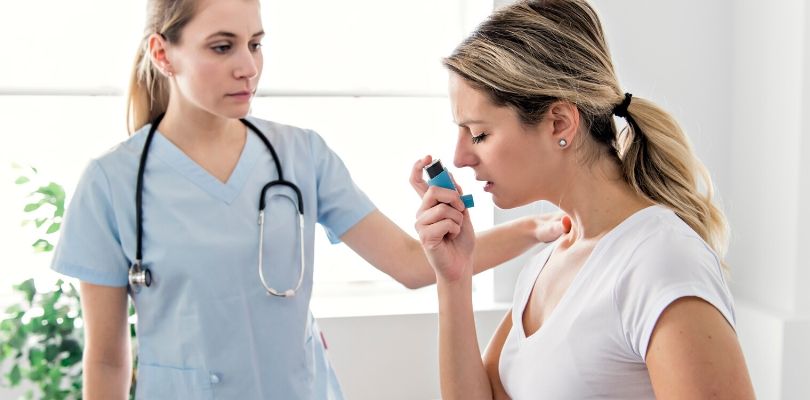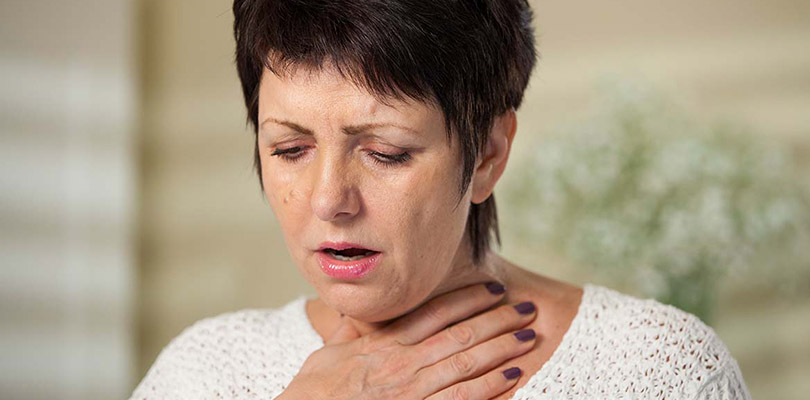What Does COPD Stand For?
According to the American Lung Association, COPD is the third most common cause of death in the United States. But many people still do not understand what COPD is or how it is treated.
What does COPD stand for? We'll go over that as well as the other information you'll need to know to familiarize yourself with the disease.
The COPD Acronym
COPD is the acronym for chronic obstructive pulmonary disease. It’s helpful to breakdown each word in the acronym to gain a better understanding of what COPD involves.
C: Chronic
Chronic means the condition is long-term. Although the severity of symptoms may vary, COPD is progressive and does not go away.
O: Obstructive
Obstructive is the classification of lung disease. Lung disease is often classified as either restrictive, obstructive or a combination of both. COPD is obstructive, which is characterized by a decreased ability to get the air out of the lungs.
P: Pulmonary
Pulmonary refers to the lungs and airways. The airways are the tubes going to the lungs.
D: Disease
COPD is considered a lung disease.
Symptoms of COPD
Symptoms of COPD tend to develop slowly over time. They may start out mild and gradually become more and more severe. Symptoms of COPD may also worsen during certain times, such as after a lung infection or due to exposure to environmental irritants. Some people also develop a COPD exacerbation for unknown reasons.
Symptoms of COPD may include:
- Shortness of breath
- Wheezing
- Coughing
- Increased mucus production
- Fatigue
- Weight loss
- Chest tightness
- Frequent lung infections
Causes of COPD
According to the Centers for Disease Control and Prevention, the leading cause of COPD is cigarette smoking. Being exposed to secondhand smoke may also lead to COPD.
While smoking is the most frequent cause of COPD, there is also a genetic form of the disease. Alpha-1 antitrypsin deficiency is also a cause of COPD. Alpha-1 antitrypsin is a type of protein that protects the lungs from damage.
Every day we are all exposed to potential lung irritants, such as air pollution. Normally, alpha-1 antitrypsin provides protection for the airways and slows down any damage from the irritants. But some people are deficient in the protein, which means they are at an increased risk of developing lung problems, including COPD. People with alpha-1 antitrypsin deficiency tend to develop COPD at a younger age than those who have COPD due to cigarette smoking.
COPD Stages
COPD is classified according to the stage or severity of the condition. COPD is staged from one to four. Stage one is the least severe. Stage four is the most serious stage of the disease.
Doctors diagnose COPD through a physical exam and various tests including a pulmonary function test. A pulmonary function test requires a person to breathe in and out in various ways with varying levels of force.
One of the tests that is part of a pulmonary function test is a forced expiratory volume (FEV1). The FEV1 measures how much air you can forcefully blow out in one second. The worse your FEV1, the more severe your COPD is considered and the higher your stage.
COPD Treatment
Although research continues on COPD, there is currently no cure for the disease. Treatment is available that is aimed at easing symptoms and slowing the progression of the condition.
Treatment may depend on the stage of the disease. It’s also common for treatment to change during the course of COPD. For example, certain medications and oxygen may not be needed during early stage COPD. But as the condition progresses, medication and other treatment may be added.
Standard treatment for COPD includes the following:
Quit Smoking
Smoking does not only cause COPD; it can make the disease worse and progress faster. Although quitting smoking will not reverse COPD, it is still beneficial in treating lung disease.
Breathing Medications
Breathing medications are one of the main treatments for COPD. Different types of respiratory medications are options depending on the frequency of symptoms and the stage of the disease. Medications often include fast-acting and long-acting bronchodilators, which relax the airways. As the airways relax, they open up, which makes it easier for air to get in and out of the lungs.
Steroids are also often prescribed to treat COPD. Steroids reduce inflammation in the lungs. Not everyone with COPD takes steroids. In some instances, steroids are only used if an exacerbation of symptoms develops. But in other cases, inhaled corticosteroids are recommended daily to prevent symptoms.
Although COPD is predominantly an adult lung disease, COPD in children can occur. Here are the symptoms and causes to be aware of.
Oxygen
People with COPD may have impaired gas exchange in the lungs. The result might be low oxygen levels. If oxygen levels are too low, it can lead to fatigue, confusion and increased shortness of breath. Oxygen therapy may improve functioning and allow someone with COPD to do more.
Chest Percussion
COPD can cause increased mucus that is sometimes thick and hard to cough out of the lungs. Chest percussion involves using different types of devices to help loosen the mucus, so it is easier to expel from the lungs.
Improving Quality of Life with COPD
Since COPD is a chronic disease, it’s essential to learn ways to not only manage symptoms but to maintain the best quality of life possible. The following suggestions may help you cope with COPD and live the best life possible.
Attend Pulmonary Rehabilitation Classes
Pulmonary rehab classes include education on various topics related to managing COPD. Information may include diet suggestions, breathing exercises and ways to pace activities. Classes also include exercise to build strength and improve cardiovascular fitness. Learning more about COPD can improve your ability to keep symptoms at bay and improve how well you function.
Reduce Exposure to Lung Irritants
Certain environmental irritants may make symptoms of COPD worse. Keep a record of when you experience an increase in symptoms and anything noteworthy, such as the pollen count, temperature or humidity level. Once you figure out what makes symptoms worse, try to limit exposure.
Develop a Support System
Lean on your family and friends when you need to. It might also be helpful to join a COPD support group. A support group can provide a great source of camaraderie and information on managing the disease.
Stay Active
Try to stay as active as possible. You may have to pace yourself with some activities and learn new ways of doing things if shortness of breath is an issue. But it’s helpful to continue to do what you enjoy. Living your life to the fullest despite having COPD contributes to both your physical and mental well-being.







